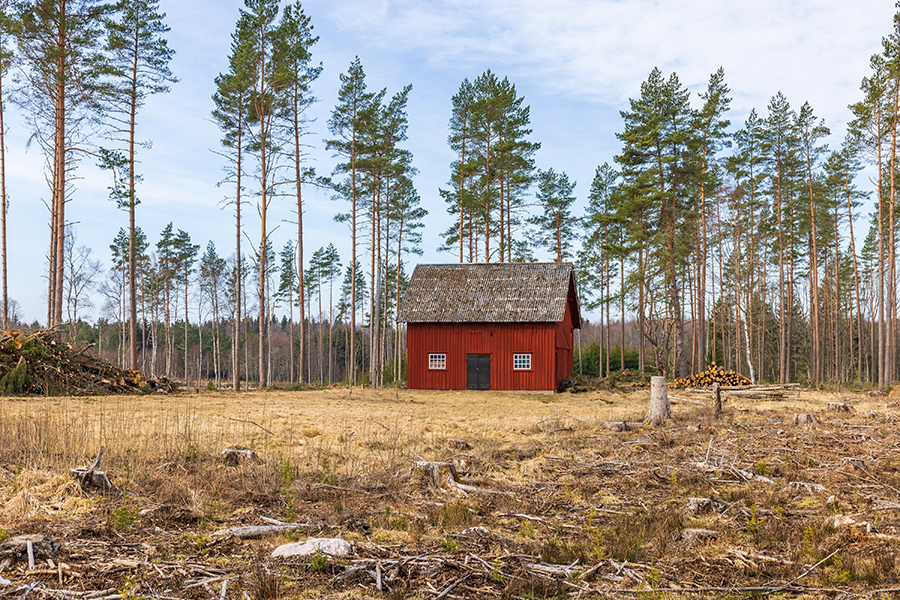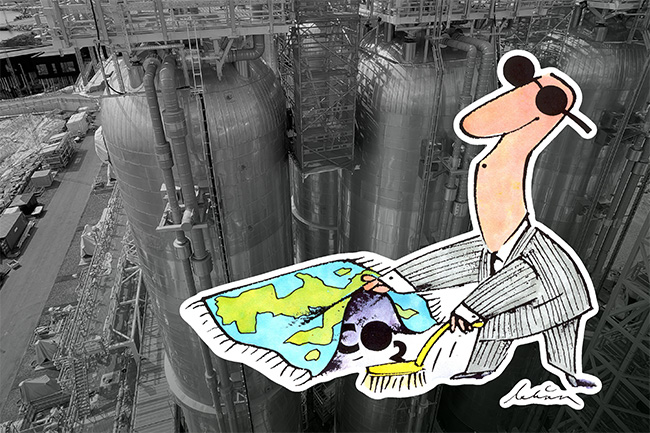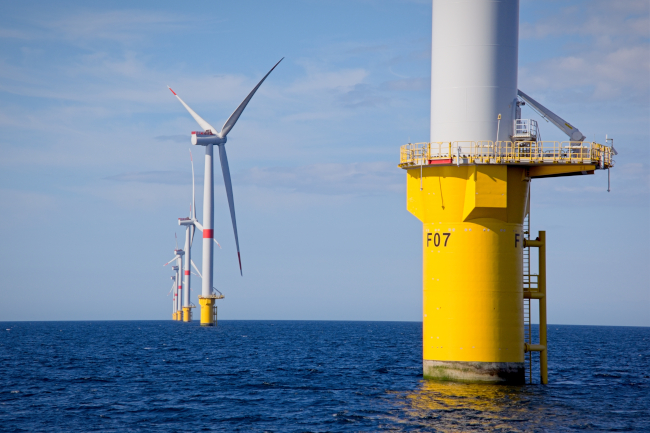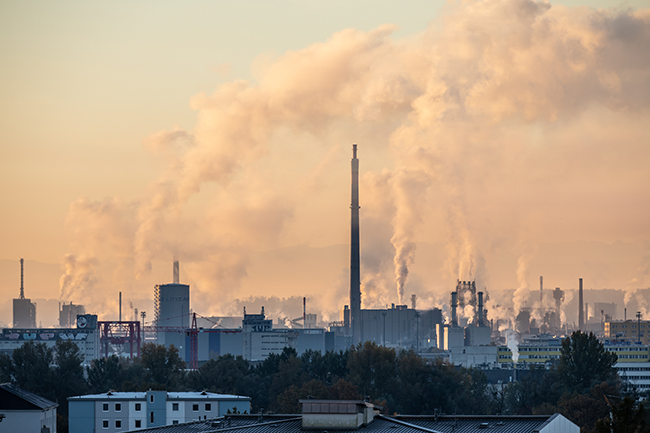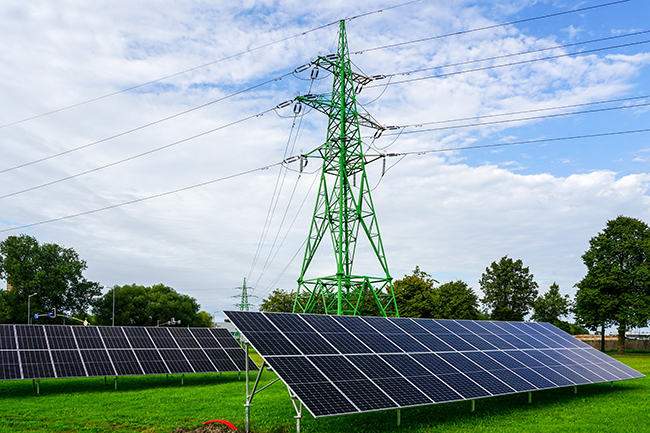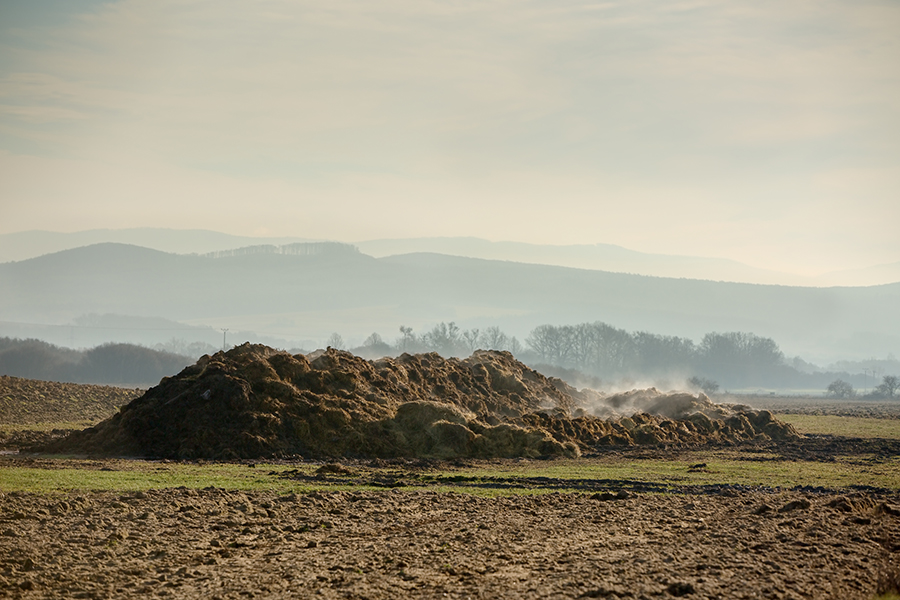Sweden faces an uphill struggle to meet EU climate targets for its forests by 2030.
Under EU legislation, net greenhouse gas uptake by forests and land in Sweden should increase by 4 million tonnes of carbon dioxide equivalent by 2030, compared with 2016–2018. But the trend is heading in the opposite direction. Instead, the latest figures show a decrease of 15 million tonnes.
Net greenhouse gas uptake by land use and forestry in Sweden remains high, accounting for around 70 percent of the country’s emissions from all other sectors. But the level of uptake is decreasing year on year.
In December 2024, the Swedish Environmental Protection Agency published its latest statistics on greenhouse gas emissions and removals (1). They show that net uptake by forests and land in 2023 was 31 million tonnes of carbon dioxide equivalents, the lowest value since measurements began and 7 percent less than the previous year. This figure can also be compared with the annual average for the entire measurement period 1990–2023, which is around 55 million tonnes.
The figures were produced using an improved methodology and further more data than in previous years. The estimates become more reliable as the methodology becomes more refined, and the figures for the whole period can then be updated. This means that the net uptake figure for a given year, 2016 for example, is no longer the same as in last year’s report, and may change again in the future.
Under the Land Use and Forestry Regulation (LULUCF), Sweden is obliged to increase its net uptake in the sector by 4 million tonnes of carbon dioxide equivalent by 2030 compared to the average for 2016–2018. The latest figures give an average value for 2016–2018 of 46.2 million tonnes per year. If 4 million tonnes are added to this, Sweden’s commitment would be a net removal of 50.2 million tonnes. The latest figure of 31.2 million tonnes in net removals therefore means that Sweden currently has a shortfall of 19 million tonnes below the 2030 target level.
Although the figures are continuously updated, the message is clear. We are heading in the wrong direction and it will be very difficult to reach the target.
Part of the land use sector’s net uptake is due to harvested wood products. But by far the largest share of uptake takes place on forest land – by mineral soil, dead organic matter and living trees. Arable land and the other land types in the sector are net emitters.
Forests sequester carbon dioxide through photosynthesis, but also release the gas into the air through cell respiration. Following clear-cutting, forest land emits more carbon dioxide than it absorbs. As trees grow back, uptake increases. After some time, usually decades, a balance is reached and then the forest becomes a carbon sink for many years.
Net uptake by Swedish forests has been high for many decades. There are several reasons for this. Since the mid-twentieth century, forest policy has helped contributed to increase timber stocks. Forests have been planted on abandoned agricultural land and drained wetlands. Environmental factors such as nitrogen deposition and climate change have also contributed to increased forest growth. Moreover, a large proportion of the country’s forests had been felled by the beginning of the 20th century, so a significant part of the increasing carbon uptake since mid-century has simply been recovery.
Nevertheless, over the last decade, annual net uptake by forests has decreased drastically, from 58 million tonnes of carbon dioxide equivalent in 2013 to 32 million tonnes in 2023. This reduction is almost double the emissions from all domestic transport in 2023 (2). The largest decrease in net uptake has been due to living trees.
According to the Swedish Environmental Protection Agency, the reason for the decline is that forest growth is no longer increasing, but has levelled off, while felling is increasing. More trees have also died due to drought and insect infestation. The increase in felling is a result of higher demand and higher prices for the raw material.
A summary of the current state of knowledge from Lund University shows that two measures in particular can increase the climate benefits of Swedish forests (3). One is to enhance carbon sequestration, mainly by reducing deforestation. The other is to use harvested wood to make more durable products and to replace fossil-intensive products, which is known as substitution. Substitution effects are difficult to calculate; they appear to have been overestimated in previous studies and are not a near-term solution. Reduced deforestation, on the other hand, provides immediate and certain climate benefits, and is the measure with the greatest effect in the coming decades.
In spring 2025 the Swedish Environmental Protection Agency will evaluate how emissions and uptake of greenhouse gases will affect Sweden’s climate goals. This evaluation will form part of the basis for the Swedish Government’s climate report.
Karin Bergqvist is a science writer and journalist.
Sources
- https://www.naturvardsverket.se/data-och-statistik/klimat/vaxthusgaser-nettoutslapp-och-nettoupptag-fran-markanvandning/
- https://www.naturvardsverket.se/data-och-statistik/klimat/vaxthusgaser-utslapp-fran-inrikes-transporter/
- Rummukainen M (2024). Skogens klimatnytta 2.0 – Klimatomställning nästa. CEC Synthesis no. 8. Center for Environmental and Climate Research, Lund University.

Net uptake in Swedish forest land 1990–2023, Y-axis shows millions of tonnesCO2 equivalent. Source Swedish Environmental Protection Agency.

